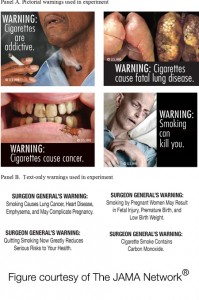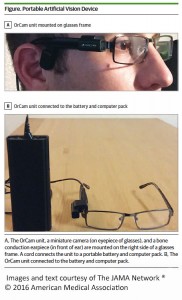EMBARGOED FOR RELEASE: 8 A.M. (ET), MONDAY, JUNE 27, 2016
Media Advisory: To contact corresponding study author Gilbert Gonzales, Ph.D., M.H.A., call Craig Boerner at 615-322-4747 or email Craig.boerner@vanderbilt.edu. To contact editor’s note author Mitchell H. Katz, M.D., email mediarelations@jamanetwork.org.
Editor’s note: These articles are being published Online First to coincide with presentation at the AcademyHealth Annual Research Meeting.
To place an electronic embedded link in your story: Links will be live at the embargo time: https://archinte.jamanetwork.com/article.aspx?doi=10.1001/jamainternmed.2016.3432
JAMA Internal Medicine
New national data suggest lesbian, gay and bisexual adults were more likely to report impaired physical and mental health and heavy drinking and smoking, which may be the result of stressors they experience because of discrimination, according to an article published online by JAMA Internal Medicine.
For the first time, the 2013 and 2014 National Health Interview Survey (NHIS), one of the nation’s leading health surveys, included a question on sexual orientation.
Gilbert Gonzales, Ph.D., M.H.A., of Vanderbilt University, Nashville, Tenn., and coauthors used the data to examine health and health risks in the lesbian, gay and bisexual (LGB) adult population and to establish baselines of the physical, functional and mental health status of these sexual minorities.
The study compared health outcomes among lesbian (n=525), gay (n=624) and bisexual (n=515) adults and their heterosexual peers (n=67,150). The total group (n=68,814) was 51 percent were female and had an average age of nearly 47 years old.
The authors report:
- Gay, bisexual and heterosexual men reported similar levels of self-rated health, functional status and physical health.
- While 16.9 percent of heterosexual men had moderate or severe psychological distress, 25.9 percent of gay men and 40.1 percent of bisexual men reported those levels of distress.
- Bisexual men reported the highest prevalence of heavy drinking at 10.9 percent compared with heterosexual (5.7 percent) or gay (5.1 percent) men.
- Gay and bisexual men were more likely to be current smokers compared with heterosexual men but bisexual men were most like to be heavy smokers (9.3 percent) compared with heterosexual (6.0 percent) and gay (6.2 percent) men.
- 21. 9 percent of heterosexual women showed symptoms of moderate and severe psychological distress compared with lesbian (28.4 percent) and bisexual (46.4 percent) women.
- Bisexual women had the heaviest alcohol consumption (11.7 percent) compared with lesbian (8.9 percent) and heterosexual (4.8 percent) women.
- Both lesbian and bisexual women (greater than 25 percent) were more likely to be current smokers compared with heterosexual women (14.7 percent), although lesbian women (5.2 percent) were more likely to be heavy smokers than heterosexual (3.4 percent) and bisexual (4.2 percent) women.
- Lesbian women were more likely to report poor or fair health and multiple chronic conditions compared with heterosexual women; bisexual women were more likely to report multiple chronic conditions than heterosexual women.
The authors suggest the highest prevalence and risk of psychological distress among bisexual adults may be associated with them being “marginalized” by the heterosexual population and experiencing “stigma” from gay and lesbian adults, leaving them with fewer connections in the sexual minority community.
The authors note study limitations, including that survey responses were self-reported. Also, data on transgender identity was not ascertained because transgender individuals are often not identified in federally sponsored health surveys. Also, the survey cannot establish causation for the health outcomes.
“Findings from our study indicate that LGB adults experience significant health disparities – particularly in mental health and substance use – likely due to the minority stress that LGB adults experience as a result of their exposure to both interpersonal and structural discrimination. As a first step toward eliminating sexual orientation-based health disparities, it is important for health care professionals to be aware and mindful of the increased risk of impaired health, alcohol consumption and tobacco use among their LGB adult patients,” the article concludes.
Editor’s Note: Health Care for Gay, Bisexual Adults Comes Out of the Closet
In a related editor’s note, JAMA Internal Medicine Deputy Editor Mitchell H. Katz, M.D., writes: “Health care professionals can help by creating environments that are inclusive and supportive of sexual minority patients. As with discussion of other personal issues, such as religious beliefs or sexual function, the important thing is to ask open-ended questions that do not prejudge responses. For example, asking a new patient whether he or she has sex with men, women or both indicates openness and acceptance. Whatever the answer, following up by asking of the patient has a special partner shows interest and willingness to discuss intimate issues. In caring for people who have experienced bias and discrimination, support is a very potent medicine.”
(JAMA Intern Med. Published online June 27, 2016. doi:10.1001/jamainternmed.2016.3432. Available pre-embargo to the media at https://media.jamanetwork.com.)
Editor’s Note: Please see the article for additional information, including other authors, author contributions and affiliations, financial disclosures, funding and support, etc.
# # #
For more information, contact JAMA Network Media Relations at 312-464-JAMA (5262) or email mediarelations@jamanetwork.org.


